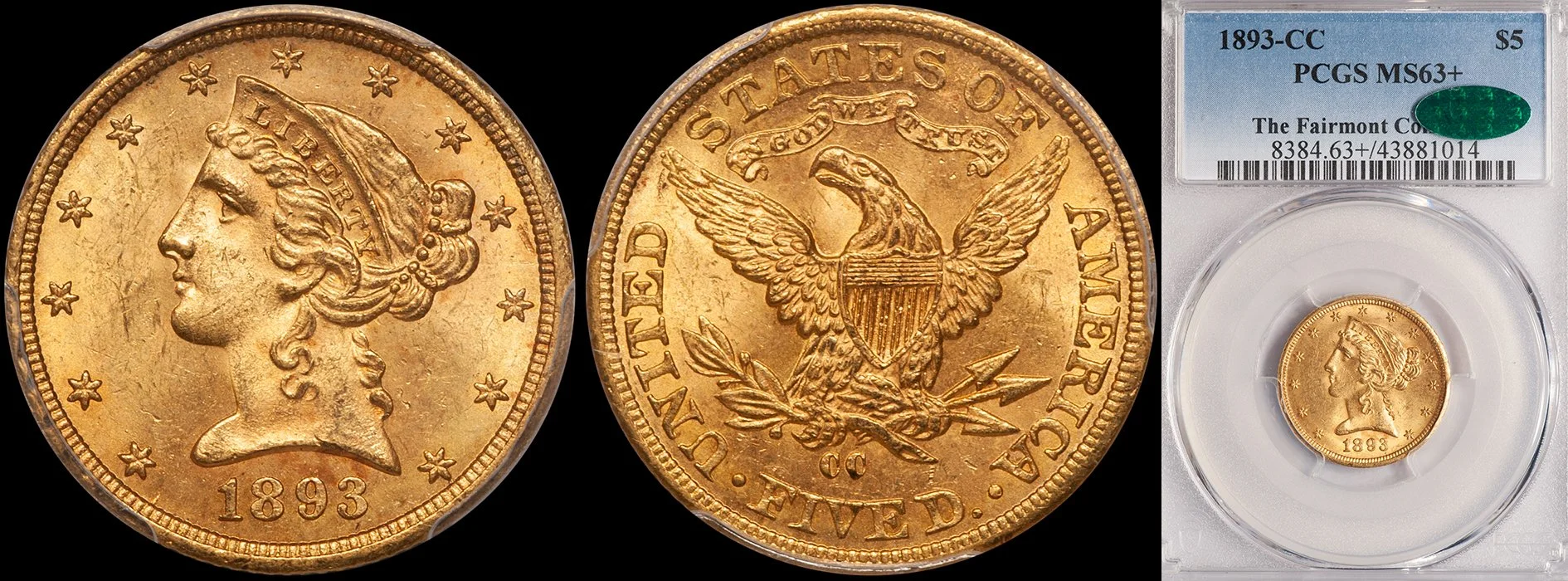Grey Area Gold Coins
/What do you call a gold coin that is too scarce to be regarded as a generic but is not rare enough to be called a rare date? I have always called these grey area gold coins “unusual dates” and was recently asked by a collector if they are a) good deals and b) good investments. Yes and no.
Let’s use the $10 Liberty Head series as our guide and let’s use the 1901-S eagle as our baseline. The 1901-S is the most common date in this series with a total population of nearly 13,000 graded at PCGS. This coin has a June 2006 Trends value of $500 in AU50, $575 in MS60 and $650 in MS62.
Now let’s randomly choose two “unusual date” $10 Libs. and compare populations and prices.
First, we’ll look at the 1856. This is a No Motto coin that is considered to be relatively common but its total population of 160 graded at PCGS is about 1/80th the number of 1901-S eagles graded. Trends on this coin is $600 in AU50 and $1,100 in AU55 (we won’t compare its price in MS60 to the 1901-S due to a huge difference in rarity between the two dates).
At a $100 premium in AU50, the 1856 seems to be a fantastic deal. And it is. It has a population of just 35 coins in this grade with 74 better at PCGS. But here’s the rub. There are not many collectors of $10 Libs. by date and the collectors who do want an 1856 probably are looking for a coin that’s at least an AU58 to MS61. So the 1856 is essentially an outcast that is unloved by the generic market and unwanted by the rarities market. Hence, its extreme lack of demand and its low price.
Let’s now look at another date, the 1895-S. I’ve always regarded the San Francisco eagles from the 1890’s to be the poster children for the Lost Cause of Unusual Date Gold. PCGS has only recorded 221 in all grades with just seventeen of these better than AU58. Trends for this date is $1,500 in AU58 and $2,500 in MS60. In MS60, this is a date with a PCGS population of just four with a scant nine graded higher. At $2,500 it has to be a total rip, especially with a common date 1901-S valued at $575. Right?
Absolutely. It’s a total rip. In fact, it’s such a fantastic rip that I’ll buy exactly none for my inventory in the next year. Not because I can’t find such a coin; I’m probably going to be offered one or two in the coming few months. No, I’m passing on this coin because I won’t be able to sell it. There’s just nobody that wants a coin like this with the possible exception of a telemarketer who may resell it to an unsuspecting investor. Except the problem is that this telemarketer will want to pay $1,500 for the coin, he’ll take three months to pay and when I get his check it will probably bounce.
Gold coins are expensive and the Liberty Head series go on and on for decade after decade. This is why Philadelphia and San Francisco Liberty Head gold aren’t popular. Who wants to collect an expensive series that is seemingly never ending? And, conversely, this is exactly why Carson City, Charlotte and Dahlonega gold are popular. They are short-lived and, with a few exceptions, don’t contain any daunting, ultra-expensive stoppers which make assembling a set out of the range of most collectors.
So, you still don’t believe me and are still convinced that coins like 1856 eagles in AU50 and 1895-S eagles in MS60 are a great value? Go look at auction prices from five or even ten years ago and see how these coins have done versus “common rare date” coins like EF45 Charlotte and Dahlonega half eagles or AU55 Carson City double eagles. Coins like the 1856 eagle and the 1895-S eagle have been among the very worst performers in the single all-time greatest price run-up in numismatic history. Not exactly a very compelling endorsement, eh?










